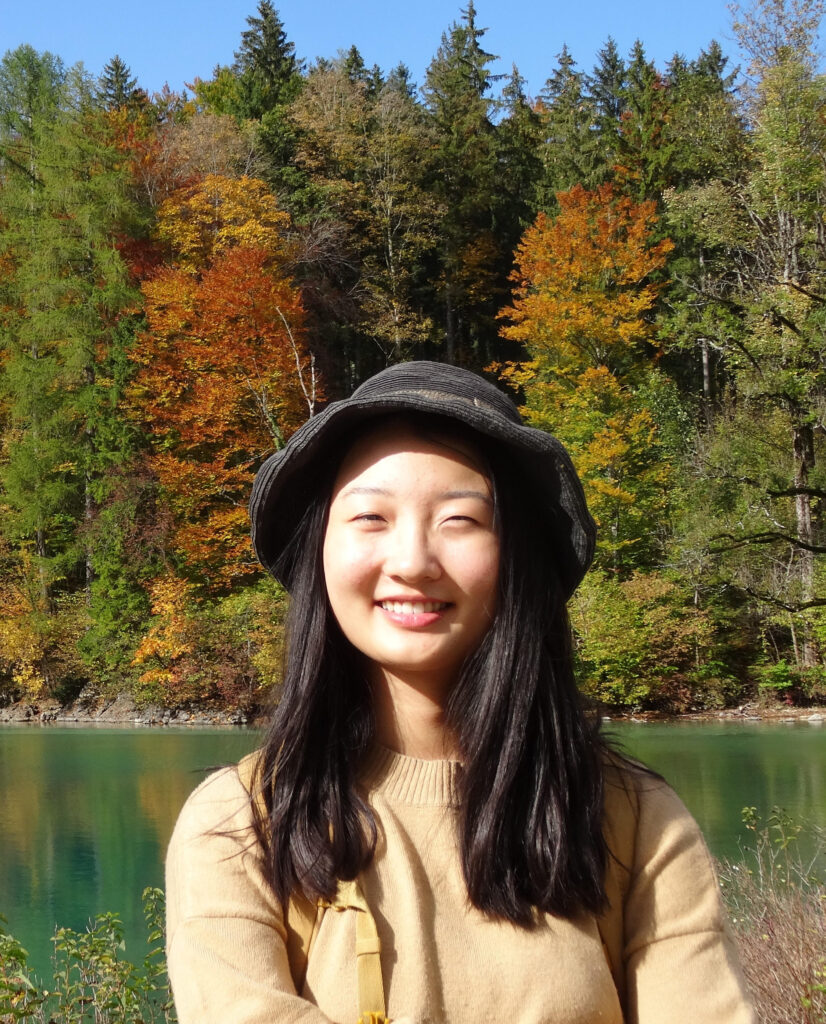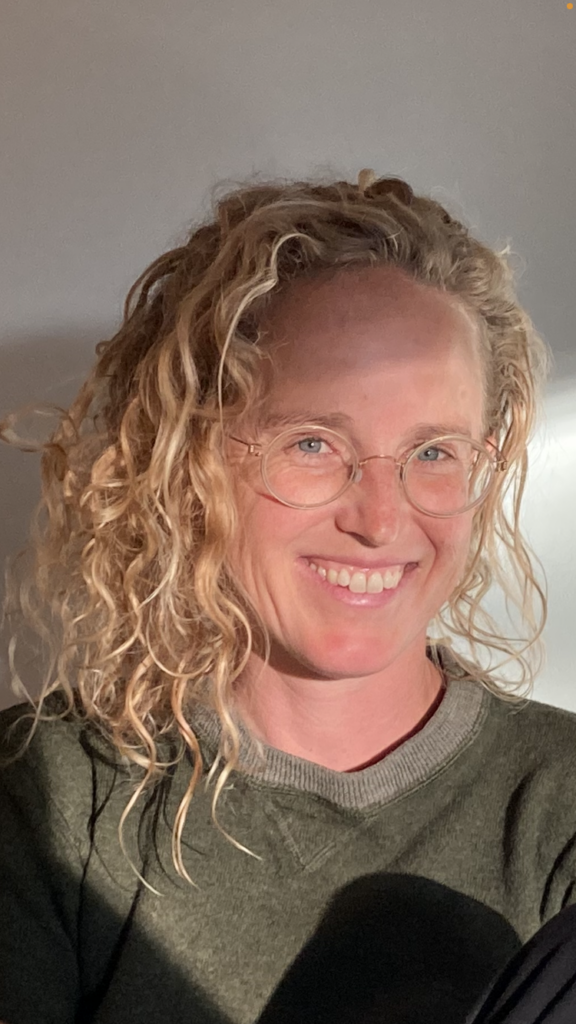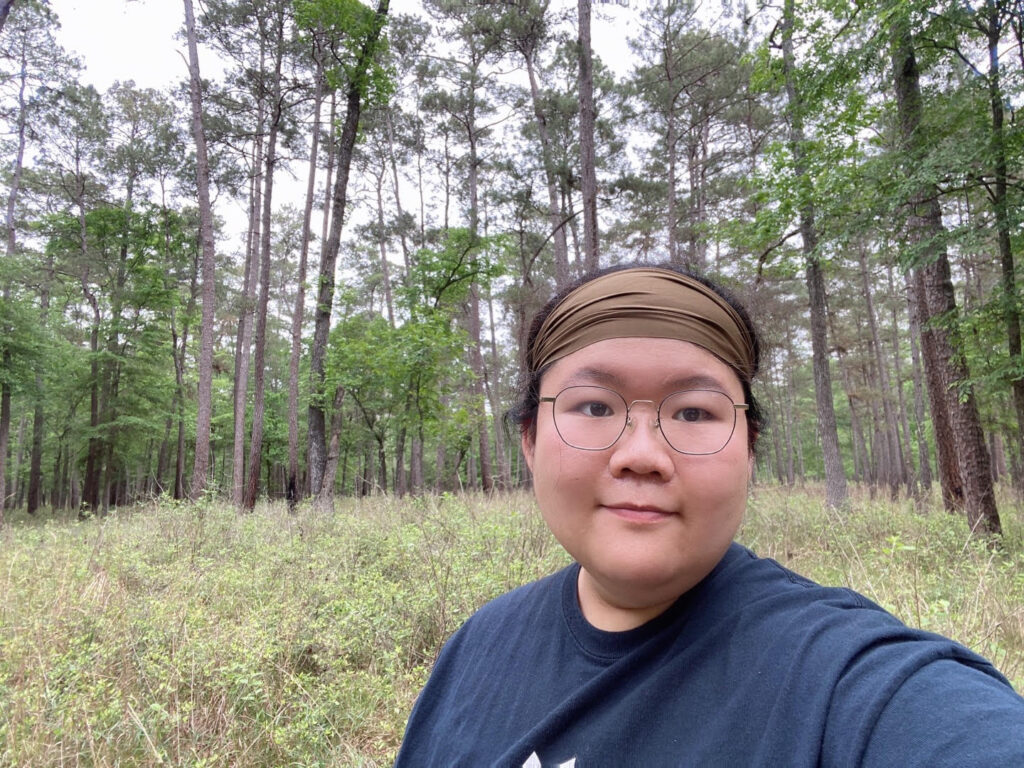
Xinyi Yan
Xinyi Yan studies Ecology, Evolution, and Behavior at University of Texas at Austin, co-advised by Drs. Caroline Farrior and Amy Wolf. Her research focuses on interactions between plants and soil microbes in a changing world, and how these interactions shape plant coexistence and community assembly. To answer these questions, she uses a variety of approach such meta-analysis, theory, field experiment and soil sequencing.
Under anthropogenic change, the loss of plant diversity and of soil microbial diversity can reenforce each other, and the feedback can have cascading effects on ecosystem functioning. My proposed research aims to help understand the link between Texas native plant diversity and their soil microbial communities. In particular, I aim to answer how plant taxonomic, phylogenetic, and functional diversities each influence soil microbial diversity and composition, and how the diversity-diversity links differ under conditions of altered precipitation and biotic interactions. To answer these questions, I use a local field experiment of 12 Texas native plant species with treatments of plant taxonomic diversities, plant phylogenetic diversities, watering, and insect exclusion. I helped collect plant trait data and will sequence soil fungal communities collected from each treatment plots. I will then conduct statistical analysis to explore the relationship between soil fungal diversity (and composition) and the treatments. Results from this project will help elucidate the impact of biodiversity loss and environmental change on plant-microbe interactions, and provide insights on native plant conservation and soil restoration.

Silas Jenkins
Silas is a graduate student in the Biology Department at the Texas State University. Their research focuses on the potential effects of inoculum source and mycorrhizal status for Quercus buckleyi growth and drought stress response at the seedling stage. This greenhouse study will endeavor to answer the overarching question: Does mycorrhizal inoculum affect drought response in Quercus buckleyi seedlings? Specifically, a) does the ecological origin of the inoculum affect the rate of root mycorrhization and the identity of the mycorrhizae (arbuscular vs. ectomycorrhizal as the first approximation of taxonomy); b) does the drought treatment change the mycorrhization rate and mycorrhizal identity; and c) do initial colonization patterns or their changes during drought affect plant response to drought?

Dohee Kim
Dohee Kim is a 3rd year Ph.D. student in the Department of Ecology and Conservation Biology at Texas A&M University under Dr. Asko Noormets’s supervision. She completed her bachelor’s and master’s degree from the Department of Environmental Science and Technology at Ewha Womans [KD1] University, Korea, studying carbon and nutrient use efficiencies of cyanobacteria. In her Ph.D., she is working on the Davy Crockett National Forest to install Tunable Infrared Laser Direct Absorption Spectrometer (TILDAS) and explore on-field measurement of isotopic flux partitioning combined with eddy covariance to validate high-resolution of plant carbon allocation and dynamics of between above-to belowground carbon usage.
Carbon allocation is a key process that is integral to ensuring healthy plant-microbe interactions, that affects carbon and nutrient cycling and resilience of the ecosystem to external stressors like drought. In this research, whole ecosystem and component carbon fluxes using eddy covariance of bulk CO2 and its isotopologues, chamber fluxes and dendrometers will be measured. The measurements serve as inputs to a carbon cycle mass balance model that will estimate the belowground carbon allocation fraction, the biomass production efficiencies of above- and belowground portions, as well as the allocation to mycorrhizae and root exudation, and to storage carbohydrates. Such information of high-resolution carbon allocation is unprecedented and can allow more accurate predictions of stress tolerance of the community and expected responses to management activities (e.g. prescribed burning), which will be incorporated to forest management decision support systems.
Owen Moorehead
Owen Moorhead, 2022 recipient, studies grassland ecology at Texas State University under Dr. Susan Schwinning and Jason Martina, and his research investigates the potential of sideoats grama (Bouteloua curtipendula) as a biological control for invasive warm-season grasses.
My research, which is a collaboration between Texas State, Kelly Lyons of Trinity University, and Dr. Alison Veach of UT San Antonio, is conducted on an experimental plot owned by the Native Prairies Society of Texas in south Austin. The experiment is focused on comparing and evaluating techniques of ecological restoration on disturbed rangeland, particularly in the Blackland Prairie ecoregion. Grassland restoration has increased significantly in the state in the past two decades along with our awareness of the importance of native grasslands. There is a need for evidence-based restoration practices explicitly validated at the local and regional level, to ensure that the (still limited) resources available for restoration are employed to best effect.
My experiment combines common methods of vegetation management — prescribed fire and herbicide — with different seeding regimes and evaluates them by multiple metrics, including carbon sequestration, species richness, and reduction in invasive cover. The goal is a comprehensive evaluation both of current techniques and one promising but under-researched practice: biological control of invasive vegetation by highly competitive, early-successional natives.
